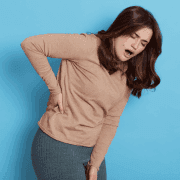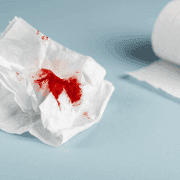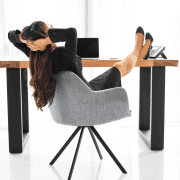How to Prevent Piles in Women
In This Article
How to Prevent Piles in Women
Prathibha
Updated on January 24, 2025
Medically verified by Dr. Fazeela
Fact checked by Dr. Arya

Proctology
5 min read
Understanding Piles: Causes and Symptoms
Piles develop when the veins around the rectum and anus are put under excessive pressure. This pressure can result from
- Chronic constipation or diarrhea.
- Prolonged sitting or straining during bowel movements.
- Pregnancy and childbirth.
- Obesity.
- Lack of dietary fiber.
Symptoms of piles in women may vary depending on their severity and type (internal or external), but common indicators include
- Pain or discomfort during bowel movements.
- Itching or irritation around the anal area.
- Swelling or lumps near the anus.
- Bright red blood in the stool or toilet paper.
Recognizing these symptoms early can prompt timely intervention and reduce complications.
How to Prevent Piles in Women
1. Prioritize a Fiber-Rich Diet
A diet high in fiber is essential to prevent constipation, which is a leading cause of piles in women.
Include foods like
- Whole grains (oats, brown rice, quinoa).
- Fresh fruits (apples, pears, berries).
- Vegetables (broccoli, spinach, carrots).
- Legumes (lentils, chickpeas, beans).
2. Stay Hydrated
Drinking enough water softens the stool and aids in smoother bowel movements. Aim for 8-10 glasses of water daily to keep your digestive system functioning efficiently.
3. Maintain Regular Physical Activity
Regular exercise promotes healthy digestion and reduces the risk of constipation. Activities like walking, swimming, or yoga can improve blood circulation and prevent pressure on rectal veins.
4. Practice Good Bathroom Habits
- Avoid straining during bowel movements.
- Don’t delay the urge to go to the bathroom.
- Limit sitting time on the toilet.
5. Avoid Prolonged Sitting or Standing
Long periods of sitting or standing can increase pressure on the rectal veins. If your routine involves long hours of sitting, take short breaks to stand, stretch, and move around.
 5 min read
5 min readDon't Ignore Bummy Pain: Could It Be Piles?
 7 min read
7 min readBlood In The Stool: A Sign You Shouldn’t Ignore
 6 min read
6 min readSitting All Day Wreaking Havoc? It Might Be Piles!
Get a Callback Now
Obesity is a significant risk factor for piles. A balanced diet and regular physical activity can help maintain a healthy weight and reduce pressure on the rectal veins.
7. Special Considerations During Pregnancy
Pregnancy increases the risk of hemorrhoids due to hormonal changes and pressure on the pelvic area. Pregnant women should
- Eat fiber-rich meals.
- Perform pregnancy-safe exercises.
- Stay hydrated.
- Avoid prolonged standing or sitting.
How Can You Control Piles?
If you’ve started experiencing symptoms of piles, early intervention can prevent progression. Here’s what you can do
- Use over-the-counter creams or ointments to relieve itching and pain.
- Take warm sitz baths to reduce swelling and discomfort.
- Apply cold compresses to the affected area for temporary relief.
- Increase your fiber and fluid intake to ease bowel movements.
- Avoid heavy lifting and activities that strain the abdominal area.
What to Do When Prevention Fails: Exploring Surgical Options for Piles
Despite preventive efforts, some women may develop severe piles that require medical or surgical intervention. Surgical options include
- Rubber Band Ligation: A minimally invasive procedure where a band is placed around the base of the hemorrhoid to cut off its blood supply, causing it to shrink.
- Hemorrhoidectomy: A surgical procedure to remove large or severe hemorrhoids.
- Stapled Hemorrhoidopexy: A technique that repositions and secures prolapsed hemorrhoids.
- Laser Surgery: A modern, less invasive approach with a faster recovery time.
Consult a healthcare professional to determine the best option for your condition.
FAQs
1. How can you control piles?
Control piles by maintaining a high-fiber diet, staying hydrated, avoiding straining during bowel movements, and seeking medical advice for early symptoms.
2. What are the symptoms of piles in women?
Symptoms include pain during bowel movements, itching or irritation around the anus, swelling or lumps near the anus, and blood in the stool.
3. Can pregnancy-related piles resolve on their own?
In many cases, pregnancy-related piles improve after childbirth with dietary adjustments, hydration, and lifestyle changes. Severe cases may require medical intervention.
4. Are home remedies effective for piles?
Home remedies like sitz baths, cold compresses, and over-the-counter creams can provide temporary relief but may not address severe cases.
5. What is the recovery time for surgical piles treatment?
Recovery times vary depending on the procedure, but most patients resume normal activities within 1-2 weeks after minimally invasive surgeries.
By adopting these preventive measures and seeking timely treatment, women can maintain their health and well-being while reducing the risk of developing piles. Prioritize your health today and take steps toward a symptom-free life.
A healthy diet, hydration, and regular exercise are essential to prevent hemorrhoids in females.
Early intervention can manage symptoms and prevent complications.
When prevention isn’t enough, medical or surgical options provide effective solutions.
Always consult a healthcare provider for personalized advice.
Source Links
Mayo Clinic – Hemorrhoids Overview and Prevention.
Cleveland Clinic – Symptoms and Treatments for Hemorrhoids.
Medical News Today – Hemorrhoids: Causes and Management.



